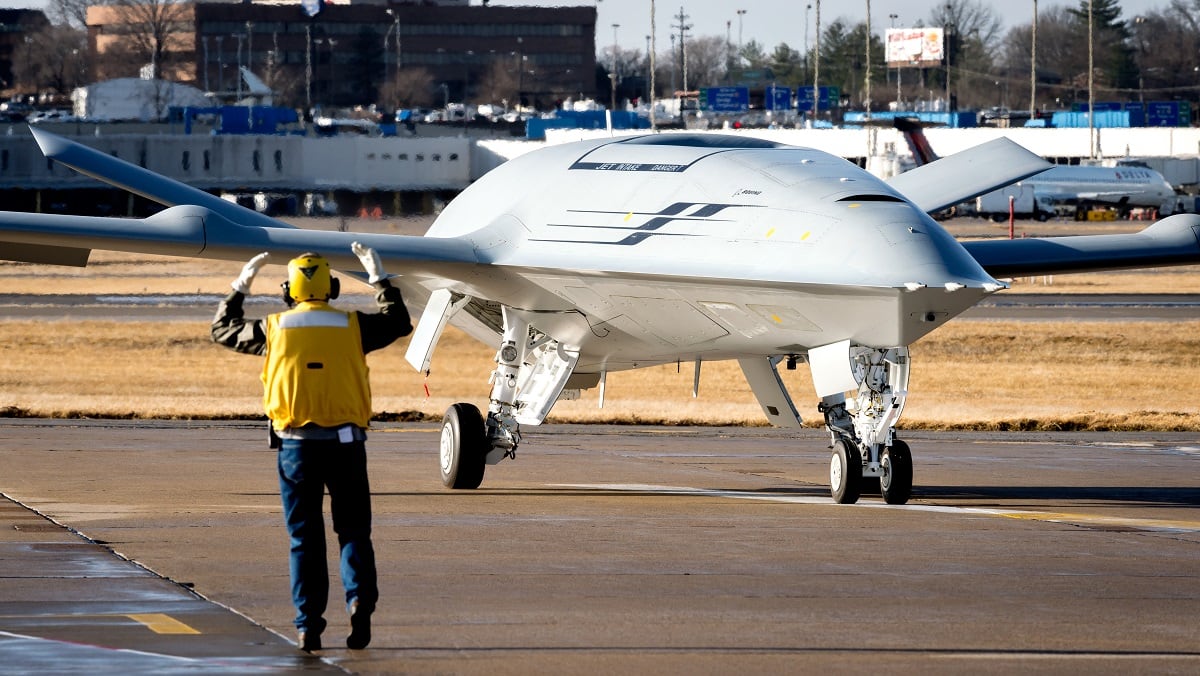WASHINGTON — Boeing has seized the Navy’s MQ-25 tanker drone contract, a major victory for a company that has in recent years struggled to win combat aircraft awards, marking a major step toward a new kind of carrier air wing.
The $805 million contract covers the design, development, fabrication, test and delivery of four Stingray aircraft, a program the service expects will cost about $13 billion overall for 72 aircraft, said Navy acquisition boss James Geurts.
The award to Boeing kicks off what the Navy would is aiming to be a six-year development effort moving toward a 2024 declaration of initial operational capability. At the end, it will mark a historic integration of drones into the Navy’s carrier air wing.
The Navy has traversed a long and complicated road in trying to develop a UAS that would fly on and off its aircraft carriers. It first envisioned UCLASS as a surveillance and strike asset, but the program was canceled in 2016 after stakeholders including the Navy, the office of the secretary of defense and Congress publicly butted heads over the requirements.
Instead, the effort to field a carrier drone was reborn that year as an unmanned tanker that could double the range of the carrier air wing.
“I think we’ll look back on this day and recognize it as a pretty historic event,” Chief of Naval Operations Adm. John Richardson said.
“From an operational standpoint we are putting our feet in the water in a big way of integrating unmanned with manned into the air wing,” he said, adding that getting the Stingray into the fleet will free up the Hornets now dedicated to the tanking mission.
While the MQ-25 contract would have been a massive win for any of the competitors, which also included Lockheed Martin and General Atomics, it holds special meaning for Boeing.
RELATED

Boeing has a long history in both naval aviation and the tanking mission, but its Phantom Works advanced technology wing has failed in recent decades to win high-stakes awards like the joint strike fighter and long-range strike bomber contracts. Today’s win is a big step in toward reversing the trend.
Boeing and General Atomics were widely seen as the favorites for the MQ-25 contest, with each firm offering wing-body-tail designs that were heavily influenced by the company’s work in the precursor to the program, the Unmanned Carrier-Launched Airborne Surveillance and Strike effort.
Both companies designed their aircraft with an eye on lowering-costs and conducted extensive and public testing of its air vehicle or major subsystems. Analysts also pointed to the companies’ experience building tankers and unmanned aerial systems.
Boeing built a full prototype of its MQ-25 design — a reworked version of a UCLASS demonstrator, its MQ-25 Program Director Don “BD” Gaddis told Defense News in March — which it then used in deck handling demos in St. Louis. Program officials have said a first flight could occur soon after contract award.
Meanwhile, General Atomics opted not to construct a full flying prototype, but has been using its Avenger drone in deck handling drills.
A win by Lockheed was unexpected, in part because it was the only vendor to put forward a flying wing design after Northrop Grumman dropped out from the competition in 2017 — which analysts interpreted as a sign that the requirements could favor wing-body-tail designs like those offered by General Atomics and Boeing.
Valerie Insinna is Defense News' air warfare reporter. She previously worked the Navy/congressional beats for Defense Daily, which followed almost three years as a staff writer for National Defense Magazine. Prior to that, she worked as an editorial assistant for the Tokyo Shimbun’s Washington bureau.
David B. Larter was the naval warfare reporter for Defense News.







